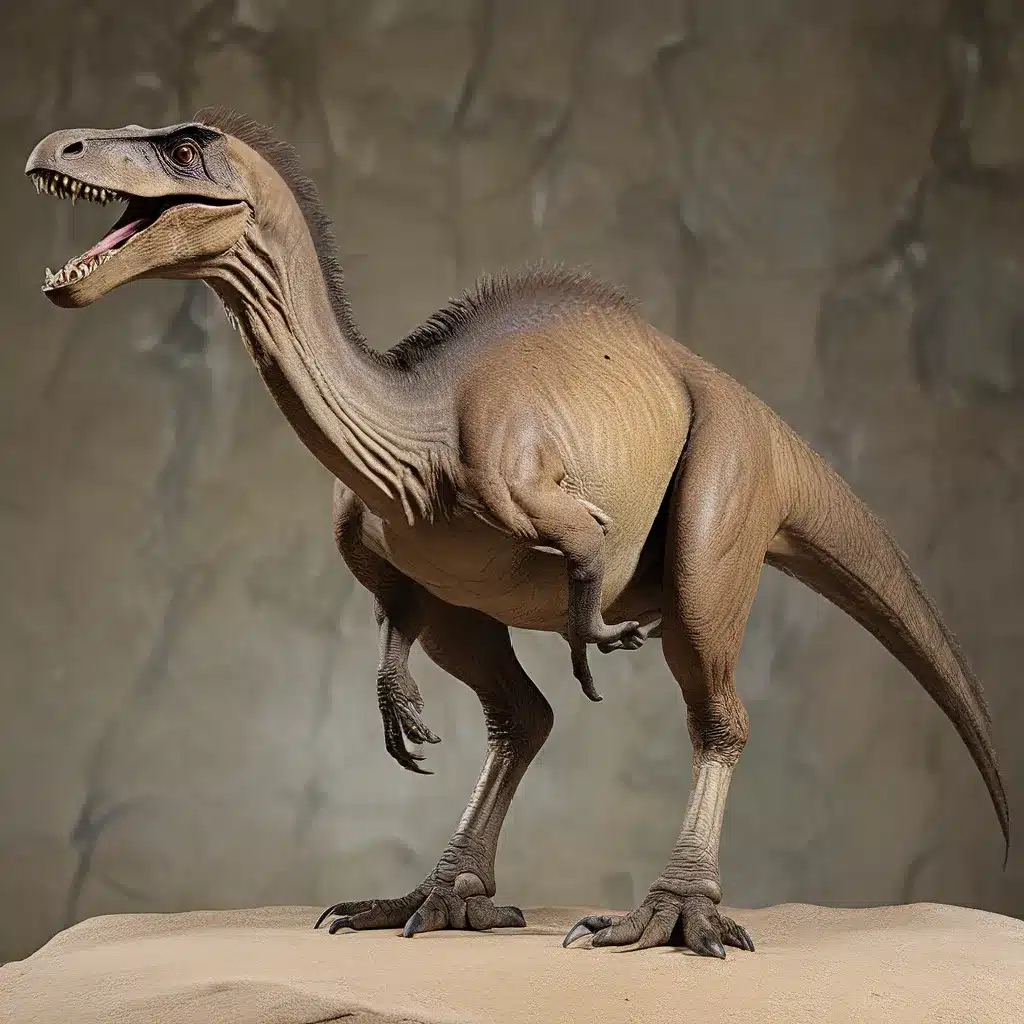
In the captivating realm of dinosaur research, one group has consistently captured the imagination of paleontologists and the public alike: the dromaeosaurids. These ferocious predators, often referred to as “raptors,” have long been the subject of intense scientific scrutiny, with new discoveries continuously shedding light on their remarkable adaptations and evolutionary history.
The Rise of the Dromaeosaurids
The dromaeosaurids, a diverse family of theropod dinosaurs, first emerged during the Late Jurassic period, approximately 160 million years ago. These agile, intelligent creatures were closely related to modern birds, sharing many anatomical features that suggest a shared evolutionary lineage. One of the most distinctive traits of the dromaeosaurids was their sickle-shaped claw on the second toe, which was likely used for grasping and disabling prey.
Amongst the most well-known dromaeosaurids is the iconic Velociraptor, made famous by its portrayal in the Jurassic Park franchise. However, the Velociraptor was just one member of a larger and more diverse group of dromaeosaurids, which included other impressive predators such as Deinonychus, Utahraptor, and Microraptor.
Unraveling the Mystery of Dromaeosaurid Thermoregulation
Recent advancements in paleontological research have shed new light on the thermoregulatory capabilities of dromaeosaurids, challenging long-held assumptions about their physiology. A groundbreaking study published in the journal Current Biology in 2024 suggests that the ability to regulate body temperature, a characteristic shared by all modern mammals and birds, may have first evolved in certain dinosaurs during the Early Jurassic period, around 180 million years ago.
The researchers, led by Dr. Alfio Alessandro Chiarenza of UCL Earth Sciences, examined the spread of different dinosaur groups across various climates throughout the Mesozoic Era, the geological period spanning from 252 to 66 million years ago. Their findings indicate that two of the three main dinosaur groups, theropods (including Velociraptor and T. rex) and ornithischians (such as Stegosaurus and Triceratops), were able to thrive in colder climates during the Early Jurassic. This suggests that these dinosaurs may have developed the ability to generate their own body heat, a trait known as endothermy.
In contrast, the sauropods, the other major dinosaur group that includes behemoths like Brontosaurus and Diplodocus, preferred to remain in warmer regions of the planet. The researchers theorize that this could be due to their larger size and lower surface area-to-volume ratio, which would have allowed them to retain heat more effectively, enabling them to maintain activity in cooler environments without the need for endothermy.
The Evolutionary Significance of Dromaeosaurid Feathers
Another fascinating aspect of dromaeosaurid biology is the growing evidence for the presence of feathers in these predatory dinosaurs. While the exact purpose of these feathery structures is still debated, many paleontologists believe they may have played a role in insulation, display, or even primitive flight.
The discovery of Microraptor, a small dromaeosaurid with long, symmetrical feathers on its arms and legs, has provided a tantalizing glimpse into the potential evolutionary path that led to the development of avian flight. Some researchers hypothesize that Microraptor and other dromaeosaurids may have been capable of gliding or even short bursts of powered flight, a precursor to the fully developed flight abilities of modern birds.
Furthermore, the analysis of fossil feather proteins has revealed that these delicate structures can persist over deep time, providing valuable insights into the evolution and appearance of these ancient dinosaurs. As the field of paleontology continues to advance, we can expect even more exciting discoveries that will further our understanding of the complex and sophisticated dromaeosaurids.
Dromaeosaurids and the Avian Connection
One of the most compelling aspects of dromaeosaurid research is the growing evidence of their close evolutionary relationship with modern birds. Many paleontologists now believe that birds descended directly from a group of feathered, maniraptoran theropod dinosaurs, with the dromaeosaurids being a key component of this lineage.
The similarities between dromaeosaurids and birds are striking, from the presence of feathers to the specialized skeletal features associated with powered flight. Additionally, the discovery of Archaeopteryx, a prehistoric creature with both avian and dinosaurian characteristics, has further solidified the connection between these two groups.
As our understanding of dromaeosaurid biology and evolution continues to evolve, the insights gained may have far-reaching implications for our comprehension of the origins and diversification of modern avian species. The study of these remarkable predators can provide a window into the past, shedding light on the complex and multifaceted story of life on our planet.
Preserving the Dromaeosaurid Legacy
The fascination with dromaeosaurids extends well beyond the scientific community, captivating the public’s imagination and inspiring countless books, films, and museum exhibits. However, with the increasing threat of habitat loss and climate change, the preservation of these ancient creatures and their fossil remains has become a pressing concern.
The Lost Kingdoms, a leading resource for enthusiasts of ancient history and archaeology, recognizes the importance of protecting the dromaeosaurid legacy. Through their educational initiatives and support for conservation efforts, they aim to raise awareness and ensure that the remarkable stories of these prehistoric predators are not lost to the ravages of time.
As we continue to unravel the secrets of the dromaeosaurids, it is crucial that we approach this task with a sense of wonder, respect, and a deep appreciation for the intricacies of life on our ever-changing planet. By studying these remarkable creatures, we not only gain a deeper understanding of our own evolutionary past but also a renewed appreciation for the resilience and adaptability of life in all its forms.


